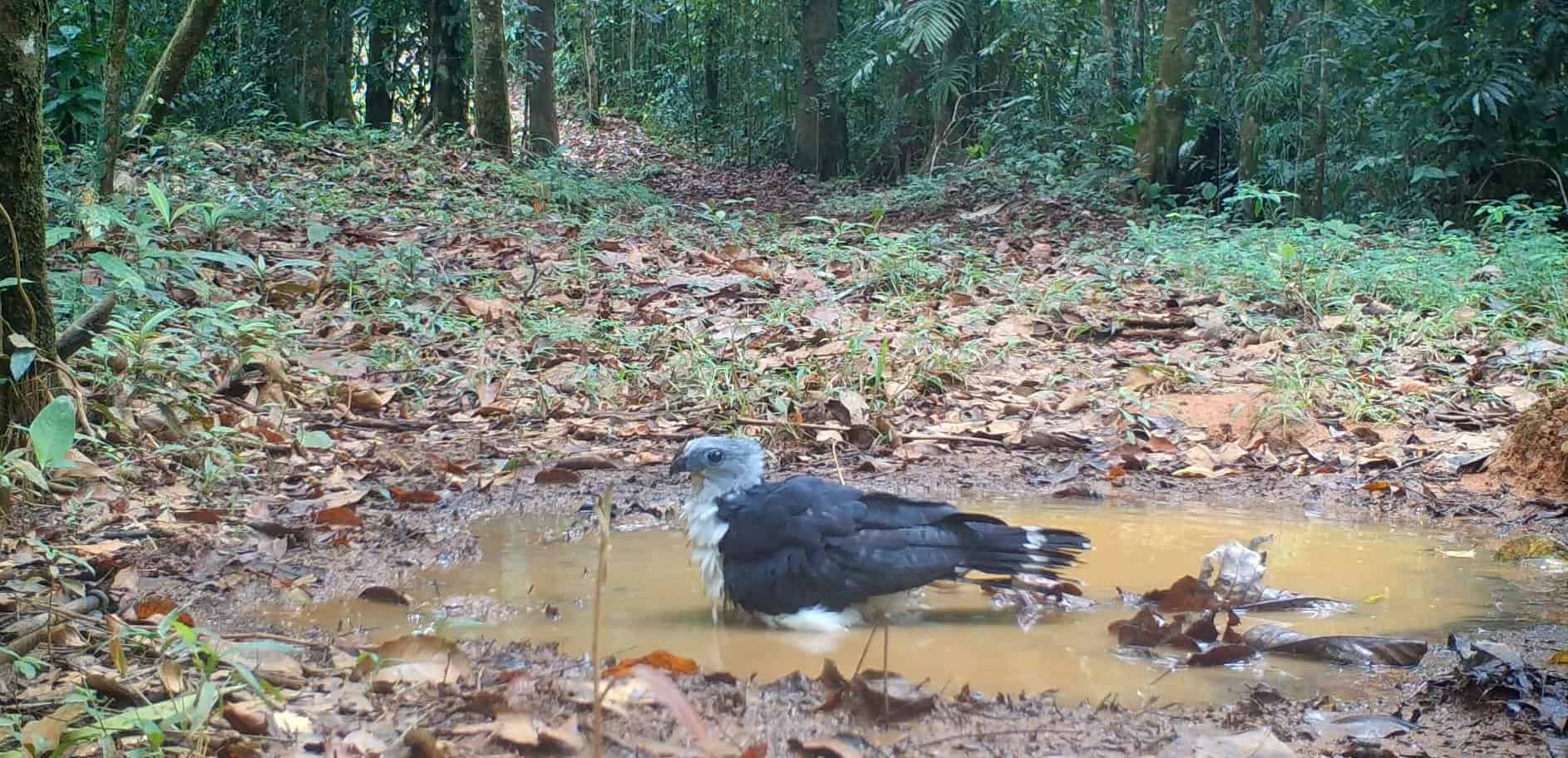What do you get when you combine the broad wings and big body of a raptor with a little curved beak on a small dove-like head? You get the gray-headed kite.
The gray-headed kite (Leptodon cayanensis) is known as the gavilán cabecigris in Spanish. It’s one of the 205 members of the Accipitridae (pronunciation here) family which is a diverse group of birds of prey characterized by keen vision, sharp talons, and hooked beaks.
Adult gray-headed kites don’t really resemble any other bird in Costa Rica. Three characteristics make it stand out. First, its coloration. It has its namesake gray head, a white chest, and black wings. All solid colors without any overlap. Second, it has a little bean head that, to me, looks like it belongs on a dove, not a bird of prey. Third, it has short legs which often make it look like its belly is sitting on the branch while perching.
Juvenile gray-headed kites are not nearly as easy to identify. That’s because they come in three different color phases that all look very different. There’s a pale morph, an intermediate/rufous morph, and a dark morph. It turns out that the reason for this variety is pretty fascinating.
The juveniles are exhibiting mimicry, which isn’t very common in birds of prey. Each color form resembles a different, larger, scarier bird of prey. For example, the pale morph resembles a black-and-white hawk-eagle and the dark morph looks like a black hawk-eagle. They gain some level of protection from predation by imitating these larger species.
Gray-headed kites are another species with a large range but tend to be uncommon within that large range. Their territory stretches from Mexico to northern Argentina. In Costa Rica, they’re found along the forested lowlands and foothills on both the Pacific and Caribbean slopes.
These birds prefer more mature forests where they perch in the canopy or on the forest edge looking for prey. They eat a variety of prey including reptiles like snakes and lizards, other birds, taking eggs and nestlings of small bird species, and insects, especially the brood of wasps and ants.
I haven’t had the good fortune of spotting a gray-headed kite yet, but I have recorded them a few times with my camera traps. Within the last two months I recorded one in Pérez Zeledón where it settled onto a log above a stream and another investigating a waterhole in northern Guanacaste. A few years ago I had some cameras in Osa where I recorded a gray-headed kite frequently bathing in a wallow made by collared peccaries. Take a look at a few of those clips in the video below and get to know the gray-headed kite.
About the Author
Vincent Losasso, founder of Guanacaste Wildlife Monitoring, is a biologist who works with camera traps throughout Costa Rica. Learn more about his projects on facebook or instagram. You can also email him at: vincent@guanacastewildlifemonitoring.com

